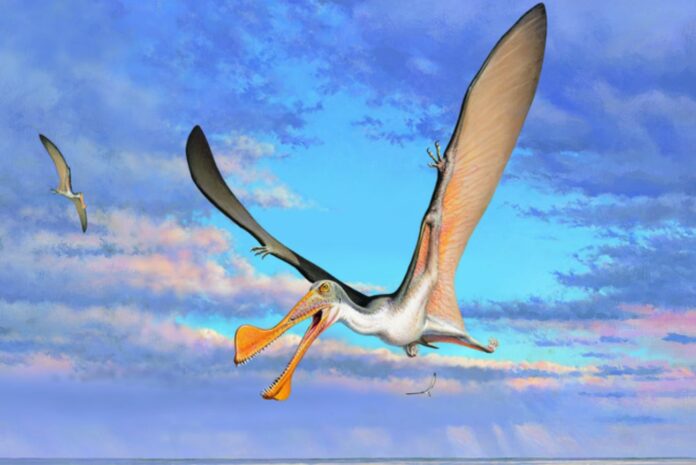Meet Australia’s Prehistoric Wonder, The First Juvenile Pterosaur And Maybe Oldest Ever Discovered in Australia.
After extensive research, a team of scientists has definitively established that the 107-million-year-old pterosaur bones, unearthed over three decades ago, hold the prestigious title of being the oldest of their kind ever discovered in Australia. This remarkable finding offers a rare and invaluable opportunity to peek into the existence of these majestic flying reptiles that coexisted alongside dinosaurs.
The study, published in the esteemed journal Historical Biology, was conducted in partnership with Museums Victoria. It involved a meticulous examination of a partial pelvis bone and a small wing bone, both of which were initially uncovered by a team led by Dr. Tom Rich, the Senior Curator of Vertebrate Paleontology at the Museums Victoria Research Institute, and Professor Pat Vickers-Rich at Dinosaur Cove in Victoria, Australia during the late 1980s.
Upon examination, the research team identified that the discovered bones originated from two distinct pterosaur specimens. The partial pelvis bone belonged to a pterosaur with an impressive wingspan surpassing two meters. In addition, the small wing bone belonged to a juvenile pterosaur, marking a groundbreaking discovery as the first-ever reported finding of its kind in Australia.
Adele Pentland, the lead researcher and a PhD student from Curtin’s School of Earth and Planetary Sciences, emphasized that pterosaurs, regarded as close relatives of dinosaurs, were reptilian creatures equipped with wings, enabling them to gracefully navigate the skies during the Mesozoic Era. This significant revelation contributes to our understanding of these winged reptiles and their prominent role in the ancient ecosystem.
“During the Cretaceous Period (145–66 million years ago), Australia was further south than it is today, and the state of Victoria was within the polar circle — covered in darkness for weeks on end during the winter. Despite these seasonally harsh conditions, it is clear that pterosaurs found a way to survive and thrive,” explains Pentland.
“Pterosaurs are rare worldwide, and only a few remains have been discovered at what were high palaeolatitude locations, such as Victoria, so these bones give us a better idea as to where pterosaurs lived and how big they were.
“By analysing these bones, we have also been able to confirm the existence of the first ever Australian juvenile pterosaur, which resided in the Victorian forests around 107 million years ago.”
She acknowledged that while the discovered bones offer valuable insights into the world of pterosaurs, there remains limited knowledge regarding their breeding patterns in challenging polar conditions.
“It will only be a matter of time until we are able to determine whether pterosaurs migrated north during the harsh winters to breed, or whether they adapted to polar conditions. Finding the answer to this question will help researchers better understand these mysterious flying reptiles,” she points out.
Dr. Tom Rich, affiliated with the Museums Victoria Research Institute, expressed his delight in witnessing the tangible outcomes of the research stemming from the dedicated efforts invested in Dinosaur Cove, which were concluded several decades ago.
“These two fossils were the outcome of a labour-intensive effort by more than 100 volunteers over a decade,” Dr. Rich adds.
“That effort involved excavating more than 60 metres of tunnel where the two fossils were found in a seaside cliff at Dinosaur Cove.”
The research publication involved collaboration and co-authorship from esteemed researchers hailing from various institutions including Curtin’s School of Earth and Planetary Sciences, the Australian Age of Dinosaurs Museum of Natural History, Monash University, and the Museums Victoria Research Institute.
Source: 10.1080/08912963.2023.2201827
Image Credit: Peter Trusler
